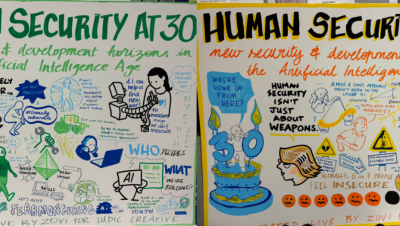The last few months have seen many natural disasters across the world, raising global attention on disaster risk reduction. In August, unusually heavy rainfalls flooded South Asia, killing over 1,200 people and displacing at least 2.5 million in Bangladesh, India and Nepal. On 7 September, the strongest earthquake to hit Mexico in a century killed 98 people, affecting 1.5 million in the state of Chiapas. Twelve days later, another major earthquake rattled Mexico City, killing over 300 people and injuring over 4,600.
Three devastating hurricanes battered the Caribbean and the United States in August and September 2017, killing hundreds of people, displacing over 2 million and costing hundreds of billions of dollars in economic losses. Two of these were Category 5 hurricanes, an exceptional force that is even more rarely seen twice in the same season. Such disasters take a great toll on human beings. But their impact is not outside of humanity’s control. While scientists increasingly link severe weather events to human-made climate change, experts also recognize the importance that proper planning can have in mitigating the impact of a disaster.
It was therefore appropriate that we commemorated last Friday the International Day for Disaster Reduction, with this year’s focus on reducing the number of people affected by natural disasters through better preparedness: one of seven global targets of the Sendai Framework for Disaster Risk Reduction adopted by the UN General Assembly in 2015.
The Sendai Framework is not alone in recognizing the human factor in our increased vulnerability to natural disasters and preparedness. The 2030 Agenda for Sustainable Development, the Paris Agreement on Climate Change, and the New Urban Agenda are just some of the other initiatives that touch on similar themes. They all consider the role that humanity is playing on climate and environmental degradation, as well as the effects of ill-planned urbanization, low levels of human development and insufficient disaster preparedness on the severity of natural disasters.
All these different approaches remind us that the concept of human security, introduced in the 1994 Human Development Report, is more relevant than ever. Published in the post-cold war era, this path breaking report shifted the attention away from inter-state conflicts to people’s insecurity: “Human security is not a concern with weapons – it is a concern with human life and dignity." Seeking to protect people’s freedom from fear and from want, human security focuses on preventing chronic threats like hunger and poverty as well as sudden disruptions like disasters.
The four essential characteristics of human security are that it is a universal concern, relevant to all people alike, at any age, in any country and in any socio-economic group; it is highly interdependent as insecurities of any kind, anywhere in the world, generate insecurities in other countries; it focuses on preventive rather than responsive interventions, as they are not only easier and less costly to manage, but also avoid the trauma of a crisis and reinforce a feeling of security; lastly, it is people-centered, concerned with how freely people can exercise their choices and how much access they have to opportunities for human development.

Human security and human development are interlinked: progress – or failure – in one of the two increases the chances of progress or failure in the other. The 2014 Human Development Report on sustaining human progress, reducing vulnerability and building resilience further highlighted the need for human security to achieve sustainable human development. Natural disasters can cause communities to fall down the ladder of human development, but these setbacks are not inevitable. While every society is exposed to risk, some – particularly those in lower levels of human development – will suffer more damage and recover less quickly than others.
When disaster strikes, everyone is affected. In 2016, more than 24 million people were forced to flee their homes because of natural disasters. But women and children are 14 times more likely than men to die in a disaster. People with disabilities, older people and indigenous peoples are also particularly exposed to risks of death, injury, disease, poverty, displacement and loss of access to basic services following a disaster. These vulnerable groups require dedicated attention from policy-makers.
Although storms, floods, earthquakes, tsunamis and other natural disasters will always occur, damage can be limited through preventive measures such as earthquake-resistant buildings, effective evacuation plans and careful urban planning. And this is the responsibility of governments everywhere.
The notion of human security calls for a renewed development partnership, based on mutual interests rather than charity and on cooperation rather than confrontation. This is what this year’s International Day for Disaster Reduction is about: working with countries countries in the design and implementation of policies that will ensure human security – and protect human development – in the face of adversity.
The HDialogue blog is a platform for debate and discussion. Posts reflect the views of respective authors in their individual capacities and not the views of UNDP/HDRO.
HDRO encourages reflections on the HDialogue contributions. The office posts comments that support a constructive dialogue on policy options for advancing human development and are formulated respectful of other, potentially differing views. The office reserves the right to contain contributions that appear divisive.


